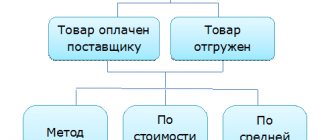Repairs in rented premises
According to the general rule, stated in Article 616 of the Civil Code, when renting property, responsibilities for its repair are distributed as follows: current repairs are the responsibility of the tenant, and major repairs remain with the lessor.
Usually, when leasing office real estate, these rules remain unchanged, since the lease terms are most often short, and it is inappropriate to shift major repairs to the tenant (and the Civil Code of the Russian Federation allows this). In such a situation, the accountant of the organization renting the premises, when carrying out repairs, needs to clearly understand what kind of work relates to the current repair. After all, if an organization “accidentally” carries out major repairs, there may be problems with taking into account expenses for tax purposes, since the tenant had no obligation to carry out such repairs. Consequently, the expenses may be considered unjustified (Article 252 of the Tax Code of the Russian Federation).
The situation is similar for the landlord. Here it is important to understand which of the tenant’s requirements for repairs must be met, because these requirements relate to major repairs, and which requirements are not justified. Accordingly, for the landlord, the tax accounting of repair costs will depend on the correct answer to this question.
Draw up and print a lease agreement for free using a ready-made template
Current repairs and maintenance of residential premises - what is the difference?
The maintenance of common property includes measures to maintain it in a condition suitable for use, without endangering the lives of residents.
The maintenance of common property, in addition to the clause on carrying out current and major repairs, includes a number of activities:
- provision of lighting for entrances.
- Temperature maintenance.
- Compliance with fire safety measures.
- Cleaning of common areas.
- Timely waste removal.
- Processing of the adjacent land plot.
The amount of payment for the maintenance of residential premises (RP) includes payment for the maintenance and current repairs of common property.
Repair or modernization
Another point when an accountant has to operate in construction terms is related to the peculiarities of accounting for modernization (completion, retrofitting, reconstruction). Indeed, in contrast to repairs, the costs of which are taken into account at a time (Article 260 of the Tax Code of the Russian Federation), expenses for such activities are written off through depreciation (clause 2 of Article 257 of the Tax Code of the Russian Federation).
At the same time, the legislator made an attempt to remove possible questions and gave definitions of completion, reconstruction and modernization in the Tax Code (see box).
Definitions from the Tax Code of the Russian Federation
According to Article 257 of the Tax Code of the Russian Federation: Work on completion, additional equipment, and modernization includes work caused by a change in the technological or service purpose of equipment, a building, structure or other object of depreciable fixed assets, increased loads and (or) other new qualities. For the purposes of this chapter, reconstruction includes the reconstruction of existing fixed assets associated with the improvement of production and the increase of its technical and economic indicators and carried out under the project for the reconstruction of fixed assets in order to increase production capacity, improve quality and change the range of products. Technical re-equipment includes a set of measures to improve the technical and economic indicators of fixed assets or their individual parts based on the introduction of advanced equipment and technology, mechanization and automation of production, modernization and replacement of obsolete and physically worn-out equipment with new, more productive ones.
But, it should be admitted with regret that these definitions turned out to be of a rather general nature; Based on them, it is often difficult to attribute specific work to modernization. Considering the cost of repair (modernization) work, the cost of an error here is quite high. And in both directions: if the modernization is incorrectly classified as a repair, the organization will face additional charges, penalties and fines. And in the opposite situation - losses due to overpaid income tax.
So in this case, it would be a good idea for the accountant to refer to the repair criteria and once again make sure that the work performed is (or is not) a modernization.
Keep records of depreciable property for free according to the new rules
VAT deductible when carrying out repair work
As for VAT, it can be deducted if the company uses the building being repaired in activities subject to VAT (clause 2 of Article 171 of the Tax Code of the Russian Federation). In this case, a deduction is possible if the following conditions are met: the work acceptance certificate is signed and the contractor issues an invoice for the cost of the work with allocated VAT. If the building in which windows and doors are replaced is used in activities not subject to VAT, then the amount of tax on repair work cannot be deducted. It must be taken into account in the cost of repairs (clause 2 of Article 170 of the Tax Code of the Russian Federation).
An example of an accounting entry for replacing windows in an office by a contractor
In the building, which belongs to the company, wooden windows are being replaced with plastic ones. A third party contractor is hired to carry out the work. The cost of the work carried out is 590,000 rubles (including VAT - 90,000 rubles). The company carries out activities subject to VAT in the building. These transactions are reflected in accounting entries: - debit 19 credit 60: 90,000 rubles - VAT on work related to the installation of windows is taken into account; — debit 20 (26, 44) credit 60: 500,000 rubles — expenses for carrying out work are taken into account; — debit 60 credit 51: 590,000 rubles — paid for the contractor’s work; - debit 68 credit 19: 90,000 rubles - VAT is accepted for deduction.
Another example: posting when purchasing material yourself
In the building, which belongs to the company, wooden windows are being replaced with plastic ones. The company buys windows independently, the total cost is 295,000 rubles (including VAT - 45,000 rubles). A third party contractor is hired to install them. The cost of the work carried out is 59,000 rubles (including VAT - 9,000 rubles). The company carries out activities subject to VAT in the building. These transactions are reflected in accounting entries : - debit 19 credit 60: 45,000 rubles - VAT on purchased plastic windows is taken into account; — debit 10 credit 60: 250,000 rubles — plastic windows for installation were capitalized; — debit 60 credit 51: 295,000 rubles — transferred to the counterparty for plastic windows; — debit 68 credit 19: 45,000 rubles — VAT accepted for deduction; — debit 19 credit 60: 9,000 rubles — VAT on work related to the installation of windows is taken into account; — debit 20 (26, 44) credit 60: 50,000 rubles — expenses for carrying out work on installing plastic windows are taken into account; — debit 60 credit 51: 59,000 rubles — paid for the contractor’s work; — debit 10 “Materials transferred for processing” credit 10: 250,000 rubles — the cost of plastic windows transferred to the contractor for installation is taken into account; — debit 20 (26, 44) credit 10 “Materials transferred for processing”: 250,000 rubles — reflects the cost of plastic windows installed by the contractor; - debit 68 credit 19: 9000 rubles - accepted for deduction of VAT on work related to the installation of windows.
Documents and definitions
So where can an accountant get information about which specific construction works are considered current repairs, which are major repairs, and which are considered modernization? The list of relevant sources is given in the letter of the Ministry of Finance of Russia dated November 23, 2006 No. 03-03-04/1/794. When resolving the issue of classifying work as construction, the financial department recommends relying on the following documents:
- Regulations on carrying out scheduled preventative repairs of industrial buildings and structures MDS 13-14.2000, approved by Decree of the USSR State Construction Committee dated December 29, 1973 No. 279;
- Departmental Construction Standards (VSN) No. 58-88 (R) “Regulations on the organization and implementation of reconstruction, repair and maintenance of buildings, municipal and socio-cultural facilities” (approved by Order of the State Committee for Architecture under the USSR State Construction Committee dated November 23, 1988 No. 312) ;
- Letter of the USSR Ministry of Finance dated May 29, 1984 No. 80 “On the definition of the concepts of new construction, expansion, reconstruction and technical re-equipment of existing enterprises.”
On our own behalf, we would add that the general document on this topic is the Town Planning Code, and in controversial situations you can seek advice from the relevant ministry - the Ministry of Construction of Russia. Specialists from this department, just like specialists from the Ministry of Finance, are required to respond in writing to requests from organizations.
Documentation of repairs
Repairs are preceded by drawing up:
- a defective statement reflecting the condition of the object, which can be made in 1 copy if the repairs are carried out on their own or in a mixed way, and drawn up in 2 copies if the repairs are carried out by a third-party contractor;
Read about what form a defective statement can take in the material “Drawing up a correctly defective report - sample.”
- estimates for repair work drawn up either by a third-party contractor or by its own department carrying out repairs;
- an order from the manager to carry out repairs, which reflects the timing of the repair work, the forces carrying it out, and, if necessary, decisions to replace temporarily absent OS;
- agreement for repairs, if it will be done by a third party;
- invoice for the internal movement of fixed assets, if the object is being repaired in its own department.
Read about the rules for issuing such an invoice in the article “Unified form No. OS-2 - form and sample.”
Upon completion of the repair work, the following is drawn up:
- certificate of acceptance of the object from repair;
For information on how to fill out such an act, read the material “Unified Form No. OS-3 - Form and Sample.”
- invoice for internal movement of fixed assets, if the object was repaired in its own department;
- a record of the repair performed in the OS inventory card.
For an example of making such a record, see the sample to the article “Unified Form No. OS-6 - Form and Sample”.
Find out how to write off materials for OS repairs in ConsultantPlus. See the authoritative opinion of K+ experts in the Ready-made solution by getting free trial access.
Cheat sheets
It is clear that studying all the above documents requires a huge amount of time. Therefore, we have prepared special cheat sheets, using which you can quickly understand what kind of work has been done in your case. There are three such cheat sheets. One cheat sheet contains lists of works with their breakdown by type. The other is based on definitions given in various regulations. It contains general concepts that make it possible to understand the type of work “at the top level.” The third cheat sheet, dedicated to modernization, stands apart in this series. It contains signs of modernization and explanations for them.
When working with our cheat sheets, we suggest using the following algorithm.
First, based on the “modernization” cheat sheet, we decide whether our work relates to repair or whether it is a modernization.
Then, having made sure that we are talking about repairs, we must try to find the types of work being performed in the first table and, based on this, determine which repairs - current or major - they relate to.
If the necessary work is not in the first cheat sheet, then we turn to the second and try to apply the deductive method, extending the general definition to our private work.
Find out about the taxes paid by the counterparty and the violations committed by him Start an audit
Accounting: major repairs
As a general rule, major repairs are required to be carried out by the lessor (Article 616 of the Civil Code of the Russian Federation). Therefore, unless the lease agreement provides otherwise, costs incurred by the tenant with the consent of the landlord must be reimbursed in money or offset against the rent. The tenant is also required to reimburse such expenses in cases where he was forced to carry out major repairs of the leased property.
The occurrence of the landlord's debt for the amount of the tenant's expenses for major repairs should be reflected in the accounting records by posting:
Debit 76 subaccount “Settlements with the lessor for reimbursement of expenses” Credit 10 (60, 69, 70...) – reflects the lessor’s debt for reimbursement of expenses.
If the landlord reimburses the tenant's expenses by transferring funds to his current account, make an accounting entry:
Debit 51 Credit 76 subaccount “Settlements with the lessor for reimbursement of expenses” - expenses for major repairs of leased fixed assets were reimbursed.
If the lessor counts the amount of capital repair costs incurred by the tenant against the rent, make an entry in the accounting records:
Debit 60 subaccount “Settlements with the lessor for rent” Credit 76 subaccount “Settlements with the lessor for reimbursement of expenses” - the costs of major repairs of the leased fixed asset are offset against the rent.
This accounting procedure is based on the provisions of the Instructions for the chart of accounts.
An example of reflecting in accounting the costs of major repairs of leased fixed assets, carried out by contract. Under the terms of the lease agreement, such costs are counted toward the rent.
Torgovaya LLC carried out a major overhaul of the rented refrigeration chamber with the help of the contractor Alpha LLC. The repairs were carried out with the consent of the landlord. The cost of the work was 8260 rubles. (including VAT - 1260 rubles). Under the terms of the lease, the landlord reimburses the costs of major repairs incurred by the tenant by crediting it against the rent.
In April, upon receipt of the work completion certificate from the contractor, the accountant made the following entries:
Debit 76 subaccount “Settlements with the landlord for reimbursement of expenses” Credit 60 - 7000 rubles. – the lessor’s debt for reimbursement of expenses for major repairs of the rented refrigeration chamber is reflected;
Debit 76 subaccount “Settlements with the landlord for reimbursement of expenses” Credit 68 subaccount “Settlements for VAT” - 1260 rubles. – VAT is charged on the cost of repair work transferred to the lessor;
Debit 60 subaccount “Settlements with the lessor for rent” Credit 76 subaccount “Settlements with the lessor for reimbursement of expenses” - 8260 rubles. – the costs of major repairs of the rented refrigeration chamber are offset against the rent.
If the agreement stipulates that major repairs are carried out by the tenant at his own expense, then the procedure for reflecting such expenses is similar to the procedure for accounting for costs of current repairs.
"Modernization" cheat sheet
The main and fundamental difference between modernization, addition, reconstruction and repair is that it changes the operational performance of the building. For example, the capacity of engineering communications increases, corridors are expanded, and the like. That is, the building receives new properties, and its characteristics are qualitatively improved.
But it must be taken into account that the operational performance of a building may change during major (and even sometimes during current!) repairs. Therefore, it is important to take into account two more indicators: the scale of change and the goal. Thus, during repairs, improved performance is always a side effect associated with the use of modern materials and (or) technologies. This effect is not the purpose of the work being carried out and is optional. And in scale, such improvements are not comparable with the scale of all the work being carried out; in the estimate and schedule they do not occupy a leading role.
During reconstruction and modernization, on the contrary, improving performance is the main goal of the work carried out. They determine not only the choice of materials and technologies for carrying out work, but also the very need for this work. Accordingly, if the estimate and schedule for reconstruction and modernization contain some work related to repairs, then they are only secondary, caused by the need and type of modernization.
Thus, modernization (reconstruction, addition) can be distinguished from repair by the documents that are drawn up in connection with the work: technical specifications, justification, estimates, schedules, contracts. During modernization, the red thread in all these documents will be quality indicators. And during repairs - quantitative.
Costs for renovation of premises
Accounting account 10 “Materials” contains information about the condition and movement of materials, raw materials, fuel, tools, building materials, workwear, equipment, etc.
Materials are accepted for accounting at actual cost (the price of their acquisition) or accounting prices.
Agricultural enterprises account for materials at the planned cost, which at the end of the year is adjusted to the actual cost on account 16 “Deviation in the cost of materials”, i.e.
That is, this account reflects the difference between the actual and planned costs.
Synthetic score 10 is active. Sub-accounts can be opened for it according to the types of material assets used in the organization’s activities.
Subaccount 10-1 “Raw materials and materials” reflects the materials necessary for the production of the main products of the enterprise (building materials for contractors).
Subaccount 10-2 “Purchased semi-finished products and components, structures and parts” reflects the materials necessary to complete the main products, which require processing or assembly costs.
What is the difference between account 41 “Goods” and 10 “Materials”? If you purchase materials for the manufacture of basic products, this is account 10. If you purchase materials that you subsequently plan to sell and make a profit, this is already account 41 “Goods”.
Subaccount 10-3 “Fuel” reflects actions with petroleum products (oil, diesel fuel, kerosene, gasoline, etc.) and lubricants that can be used for the operation of vehicles or production needs (including energy generation, fuel, etc. ).
Subaccount 10-4 “Containers and packaging materials” reflects actions with containers or materials for their manufacture and use (parts for assembling boxes, barrel staves, hoop iron, etc.).
Subaccount 10-5 “Spare parts” reflects materials and components for the repair of equipment, vehicles, spare tires, etc.
Subaccount 10-6 “Other materials” reflects production waste (stubs, offcuts, shavings, irreparable defects, scrap materials, materials from the disposal of fixed assets, etc.).
Subaccount 10-7 “Materials transferred for external processing” reflects materials transferred for external processing, which are then planned to be used for the production of products, and the cost is included in the cost of production.
Subaccount 10-8 “Building materials” is used directly by developer organizations. It takes into account all the building materials necessary for the construction, installation, finishing of the construction site and other materials used in construction.
Subaccount 10-9 “Inventory and household supplies” reflects inventory, tools, household supplies, etc.
Subaccount 10-10 “Special equipment and special clothing in the warehouse” reflects special tools, special devices, special equipment and special clothing in the warehouse.
Cheat sheet by type of work
| Maintenance* | Major renovation** |
| sealing and filling joints, seams, cracks | resumption of plastering of all premises |
| restoration in some places of the lining of the foundation walls from the basements and plinths | replacement of existing and installation of new technological equipment in buildings |
| re-laying of individual sections of brick walls up to 2 sq.m. | renovation of built-in premises in buildings |
| elimination of local deformations by re-lining and strengthening walls | insulation and noise protection of buildings |
| insulation of freezing sections of walls in individual rooms | repair of plaster in the amount of more than 10% of the total plastered surface |
| restoration of individual walls, lintels, cornices | production of design and estimate documentation |
| partial replacement or strengthening of individual elements of wooden floors | changing the roof structure |
| strengthening the elements of the wooden rafter system, including changing individual rafter legs, racks, struts, sections of purlins, sheathing. | equipment of attic spaces for use |
| elimination of dampness, airflow | transfer of the existing power supply network to increased voltage |
| cleaning ventilation ducts and exhaust devices | installation of automatic fire protection and smoke removal systems |
| repair of ventilation ducts and exhaust devices | partial re-laying (up to 10%), as well as strengthening of stone foundations and basement walls, not associated with the superstructure of the building or additional loads from newly installed equipment |
| antiseptic protection of wooden structures | repair of existing drains around the building |
| fire protection of wooden structures | sealing cracks in brick or stone walls, clearing furrows, and bandaging seams with old masonry |
| strengthening and replacing drainpipes | repair, replacement and replacement of worn partitions with more advanced designs of all types of partitions |
| strengthening and replacement of small coverings of architectural elements along the facade | partial or complete replacement of rafters |
| cleaning the roof from snow and ice | partial (over 10% of the total roof area) or complete replacement or replacement of all types of roofing |
| replacement, restoration of individual elements, partial replacement of window, door stained glass or showcase fillings (wooden, metal, etc.) | partial (more than 10% of the total floor area in the building) or complete replacement of all types of floors and their bases |
| replacement of individual sections of pipelines, shut-off and control valves | repair or replacement of interfloor ceilings |
| changing sections of heating devices, shut-off and control valves | replacement and strengthening of all types of stairs and their individual elements |
| replacement of individual sections of flooring. | continuous anti-corrosion painting of metal structures |
| restoration of destroyed sections of sidewalks, driveways, paths and platforms | repair and renewal of cladding with an area of more than 10% of the cladding surface |
| punching (sealing) holes, sockets, grooves. | continuous painting with stable compounds. |
| replacement of individual sections of blind areas around the perimeter of buildings | partial or complete replacement of air ducts |
| restoration of the building layout. | change of fans, heaters, filters |
| replacement of individual appliances (cisterns, toilets, washbasins, sinks, urinals, drinking fountains, water taps) | partial or complete replacement of ventilation ducts |
| change of individual sections of electrical wiring (up to 10%). | replacement of worn-out sections of the electrical network (more than 10%) |
| all types of plastering and painting works in all premises | changing safety shields |
* The most common types of work are given. For a complete list of works, see Appendix 7 of VSN No. 58-88(r) and Appendix 3 to Regulation No. 279 (approved by Resolution of the USSR State Construction Committee dated December 29, 1973 No. 279). ** The most common types of work are given. For a complete list of works, see Appendix 9 of the VSN No. 58-88(r), as well as Appendix 8 to Regulation No. 279 (approved by Resolution of the USSR State Construction Committee dated December 29, 1973 No. 279).
OSNO and UTII
If an organization applies a general taxation system and pays UTII, then the calculation of taxes when repairing leased property depends on the type of activity for which it is used.
If the leased property is used only within the framework of activities under the general taxation system, then take into account the costs of its repair according to the rules in force under the general taxation system (clause 9 of Article 274 and clause 7 of Article 346.26 of the Tax Code of the Russian Federation).
If the leased fixed asset is used only within the framework of activities on UTII, then do not take into account any expenses in the single tax base, since the object of UTII taxation is imputed income (clause 1 of Article 346.29 of the Tax Code of the Russian Federation).
Leased property can be used in the activities of an organization subject to UTII and in activities for which the organization pays taxes under the general taxation system. In this case, the costs of repairs, as well as input VAT, must be distributed (clause 4 of article 170, clause 9 of article 274 and clause 7 of article 346.26 of the Tax Code of the Russian Federation).





